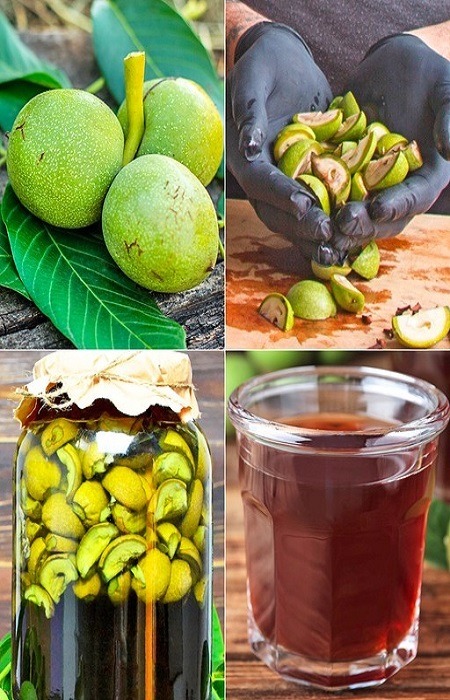Nocino is a typical liqueur from the Modena tradition, widespread throughout Italy, prepared at the beginning of summer and enjoyed throughout the winter. The main ingredient is the walnut, traditionally harvested on St. John’s Day, June 24th, or in early July when the walnuts are at their prime for making excellent homemade Nocino. For the preparation, whole, unripe, still green walnuts without the shell are used. They are first macerated in sugar and then infused in alcohol.
Ingredients:
Hazelnuts: 850 g (approx. 24 walnut shells)
Pure 95° Alcohol: 1 liter
Sugar: 500 g
Cascade: 500 ml
History and Tradition of Nocino
According to tradition, the nuts for making Nocino should be gathered on the night of San Giovanni (St. John’s Day) by the most experienced woman in preparation, who must climb the tree barefoot and handpick the best nuts without damaging the skin, especially avoiding the use of metal tools which can cause oxidation of the nuts and potentially affect the success of the liqueur. This is the story that accompanies the creation of this liqueur, which apparently originated in France and then spread throughout Italy, particularly in Modena and the central north. Legend has it that the nuts, after being harvested, must lie in the nighttime dew all night before the production of Nocino begins. The preparation concluded on the night of October 31st, the eve of All Saints’ Day.
Nocino is more than just a liqueur; it’s a blend of history, tradition, and culinary art, a treasure of the Italian heritage that brings warmth and flavor to the winter months. The recipe, steeped in tradition and lore, offers a glimpse into the rich cultural tapestry of Italy and its deep-rooted love for fine, homemade spirits.
